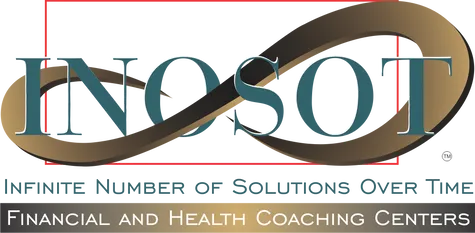See Our Latest Blogs
Embark on an Enlightening Journey:
Unlock the Knowledge Vault and Dive into Our Latest Blogs!

Fueling Growth: Navigating Business Loans for Small Businesses
“Not only are bloggers suckers for the remarkable, so are the people who read blogs .” - Seth Godin
Introduction:
As an established enterprise, you are no stranger to the ever-evolving landscape of business. As you continue to grow and expand, you may find that additional capital is essential to fuel your ambitions and take your business to new heights.
In this blog, we will delve into the world of business lending tailored to established businesses, exploring various financing options that can serve as the catalyst for your growth. Whether you seek to expand operations, optimize cash flow, or invest in innovative technologies, strategic borrowing can unlock the full potential of your enterprise.

With that said, here are 7 financing options, 5 benefits of strategic borrowing, 7 key considerations before borrowing so you are a step ahead of the competition! 👊
The Importance of Strategic Borrowing
Effective financial management is a cornerstone of any thriving business. While a degree of organic growth is expected, strategic borrowing can accelerate your business's progress and provide the necessary resources to seize opportunities that arise in the market. A well-planned business loan can empower you to make substantial investments, expand to new markets, upgrade infrastructure, and launch new products or services.
It is crucial, however, to approach borrowing with caution and a clear strategy. Evaluating your business's current financial health, cash flow projections, and understanding the potential risks and rewards of different financing options will allow you to make informed decisions and optimize the benefits of business loans.
Understanding Your Financing Options
1. Traditional Bank Loans:
Traditional bank loans are the most common form of business financing. They offer stability, predictable repayment terms, and may come with lower interest rates. These loans often require a strong credit history, collateral, and a well-established business track record. The application process can be lengthy, but for established businesses with a solid financial standing, they remain a preferred option.
2. Small Business Administration (SBA) Loans:
SBA loans are partially guaranteed by the U.S. Small Business Administration, making them more accessible for businesses that may not qualify for traditional bank loans. They offer competitive interest rates and longer repayment terms, which can be advantageous for financing larger projects or expansions.
3. Equipment Financing:
For enterprises looking to acquire new machinery, vehicles, or equipment, equipment financing can be a viable option. The equipment itself serves as collateral, reducing the lender's risk and potentially leading to more favorable terms.
4. Invoice Financing:
If your business deals with invoices and has outstanding accounts receivable, invoice financing can provide a quick infusion of capital. Lenders advance a percentage of the outstanding invoices' value, which can help improve cash flow and bridge temporary gaps in working capital.
5. Business Lines of Credit:
A business line of credit provides access to a predetermined amount of funds that you can draw upon as needed. It works similarly to a credit card, allowing you to pay interest only on the amount used. A line of credit can be valuable for managing seasonal fluctuations, covering unexpected expenses, or financing short-term projects.
6. Venture Capital and Angel Investors:
For businesses with high-growth potential, venture capital and angel investors can be significant sources of funding. These investors provide capital in exchange for equity in the company, and their expertise and network can add significant value beyond the financial investment.
7. Crowdfunding and Peer-to-Peer Lending:
In recent years, crowdfunding and peer-to-peer lending platforms have gained popularity as alternative funding sources. These platforms allow businesses to raise capital from a large number of individuals who contribute small amounts, collectively funding the venture.
Strategic Borrowing for Growth
1. Expanding to New Markets:
Entering new markets requires substantial investment in research, marketing, and operational setup. Strategic borrowing can provide the necessary capital to undertake market expansion confidently.
2. Innovating and Adopting New Technologies:
Remaining competitive in today's fast-paced business environment often demands the adoption of cutting-edge technologies. Financing can facilitate technology upgrades, process automation, and digital transformation initiatives.
3. Investing in Human Capital:
Talented and skilled employees are the backbone of a successful enterprise. Securing financing can enable you to invest in employee training and development, fostering a skilled workforce that drives growth.
4. Launching New Products or Services:
Innovation is key to sustained growth. A business loan can finance product development, marketing campaigns, and initial production costs for new offerings.
5. Streamlining Operations and Efficiency:
Optimizing internal processes and operations can lead to cost savings and increased efficiency. Financing can support initiatives such as inventory management systems, supply chain optimization, and workflow automation.
Key Considerations Before Borrowing
While strategic borrowing can be advantageous, it is essential to proceed with careful planning and due diligence. Here are some critical considerations before taking on a business loan:
1. Assessing Borrowing Capacity:
Determine how much debt your business can comfortably manage based on your cash flow projections and revenue forecasts. Avoid overburdening your company with excessive debt that could lead to financial instability.
2. Interest Rates and Terms:
Compare interest rates, repayment terms, and any associated fees among different lenders. The goal is to secure favorable terms that align with your business's financial objectives.
3. Future Cash Flow Projections:
Perform thorough cash flow projections to ensure that your business can comfortably meet loan repayments while maintaining operational stability.
4. Business Plan and ROI Analysis:
Evaluate the potential return on investment (ROI) of the proposed borrowing. A well-structured business plan with clear revenue projections will help you understand the impact of the loan on your business's growth.
5. Collateral and Risk Mitigation:
If you are considering a secured loan that requires collateral, carefully assess the value and risks associated with the assets you intend to pledge.
6. Prepayment Options:
Check whether the loan allows for prepayment without penalties. This flexibility can be advantageous if you wish to repay the loan earlier than anticipated.
7. Diverse Lender Selection:
Explore borrowing options from different types of lenders to find the best fit for your specific needs. Don't limit yourself to traditional banks; consider alternative lenders that may offer more flexible terms.
Conclusion
For established enterprises with a clear vision for growth, strategic borrowing can be a powerful tool to fuel expansion, optimize cash flow, and unlock the full potential of the business. Understanding the various financing options available and conducting thorough due diligence before borrowing will ensure that you make informed decisions that align with your business goals.
As you embark on the journey of navigating business loans, remember that borrowing should be a means to an end – facilitating growth and creating new opportunities for your enterprise. By approaching borrowing strategically and responsibly, you can fuel the growth of your business and position it for long-term success in the dynamic world of business.
Start your own blog checklist:
Here is a quick checklist to get you started with you website blow. Remember imperfect action beats inaction, get started and keep publishing.
Create your blog page then add the blog element
Add the blog element to your page and select if you want compact or list view
Start planning your blog topics by Identifying what resonates with your audience. If you are stuck you can use sites like - https://answerthepublic.com/
Create an outline serves your company goals.
Write conversationally, like if you were telling a story to a friend
Pick a catchy title.
Use several media types (gif, short video, or image) to deliver your messages.
Use data to back up claims or ideas - make sure to cite all sources❗
Have a call to action and or give your audience something to walk away with.
Take 30 minutes to edit your post.
Driving Growth, Amplifying Impact

George B

Michael & Dan are so incredibly helpful! I've seen them help so many people. Both are amazing fountains of knowledge. I've seen numerous instances where Dan saved clients 6 and 7 figures on their taxes.

Tania S, EA

Daniel has been a great inspiration! He is very helpful and a great mentor.

Juanita B

I know that Dan will be there for you to answer any questions.
Get In Touch
Email: [email protected]
Address
Office: 21 West Laurel Drive #67
Assistance Hours
Mon – Fri 9:00am – 6:00pm
Sunday – By Appt
Phone Number:
(831) 888-4121
Unleash Your Business Brilliance.
Guiding Your Path to Prosperity: Transforming Dreams into Reality
© 2025 INOSOT Business Coaching Centers - All Rights Reserved

